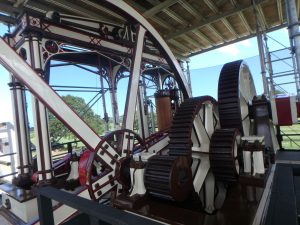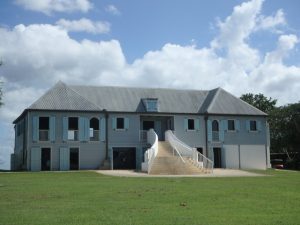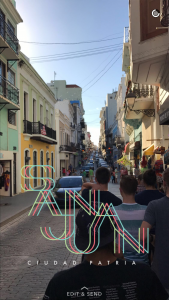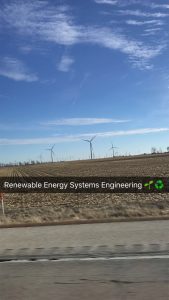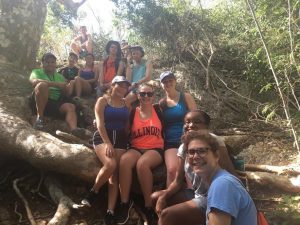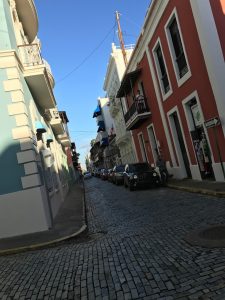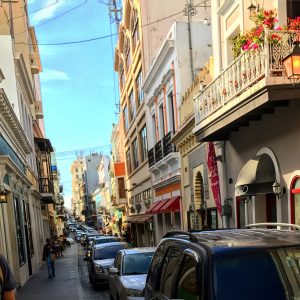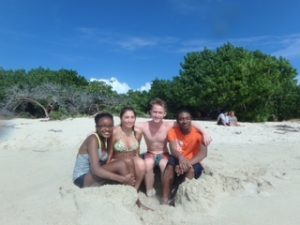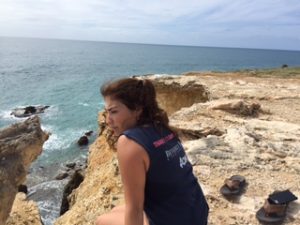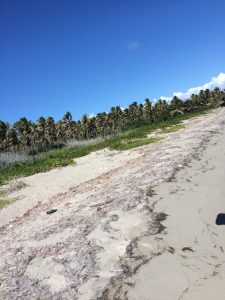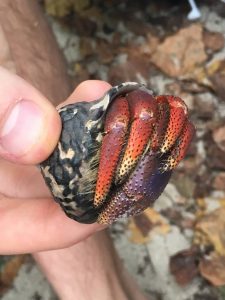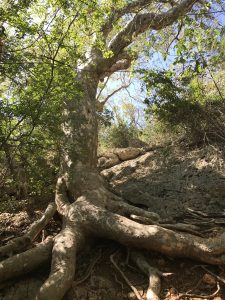Until around 2006, Puerto Rico’s economy was one of the most competitive in both the Caribbean region and Latin America. In Puerto Rico, 1.6% of the work-force are agriculture workers and approximately 52% of the land is used for agriculture (Rivera). As a leading competitor in agriculture, 75% of Illinois’s total land area is farmland. Because of the importance of agriculture in both economies, it is vital that both the drawbacks and benefits of the agricultural/food system in Puerto Rico and Illinois are effectively compared and analyzed.
There are a few drawbacks/costs to Puerto Rican agriculture. One of these is the lack of sufficient natural resources. Other than the abundances of clay, sand, and limestone found on the the island, there is a severe lack of the resources necessary to maintain what remains of the territory’s dependence on food production. Over the past 60 years, the production of crops such as coffee, tobacco, and sugar, Puerto Rico’s primary cash crops, has declined. This is due mostly to the dramatic decline of the agricultural sector (“Puerto Rico – Agriculture”). In October of 2016, it was found that agriculture accounted for only 0.9% of Puerto Rico’s gross domestic product (“The World Factbook”).
There are also costs to agriculture in Illinois. For one, agrichemicals, such as pesticides and fertilizers, pose significant risks to both the environment and the health of animals and humans when used improperly. Illinois’s climate also leads to both negative and positive impacts. In terms of the negative, the pollination of crops such as corn and soybeans can be vulnerable to changes in weather. This affects these crops mostly due to the fact that they are planted in spring and harvested in the fall. Illinois’s wet springs make it difficult for farmers to work because the soil is often too wet to support heavy equipment and to provide seedbeds of sufficient quality. Following planting, newer plants are at a larger risk of being overwatered. At the point of harvest, weather that is consistently wet slows in-field drying. As a way to combat this issue, some farmers turn to using fossil fuel for drying which increases greenhouse gases. These wet springs also introduce a new range of pests that disturb crops across Illinois (Jarrell, 2009).
There are also some things that are benefitting Puerto Rican agriculture. Although agriculture in Puerto Rico has been declining over the past 60 years, many people believe that it will soon improve. According to Myrna Comas, the Agriculture Secretary, Puerto Rico could even double its food production by 2025 (Allen & Penaloza, 2015). In recent years, engineers who focus on agricultural technology have been working on creating new technologies that will help farmers do things such as monitoring their crops. These ways in which innovators have been improving agriculture by bring people and their ideas together can have long lasting positive effects (Luscombe).
Illinois agriculture also has many benefits. As a leading corn and soybean producer, much of the US and many other countries depend on Illinois agriculture to be efficient. For one, it generates over $19 billion every year. In the many rural areas in Illinois, agricultural production is a large part of the citizens’ income. In urban areas, agricultural processing and manufacturing dominates. Because of these urban areas, Illinois comes in first in the United States for processed food sales with $180 billion and 2,640 manufacturing companies. Illinois has a transportation system with over 2,000 miles of interstate highways, which surpasses many other states dependent on agriculture. It also ships around $8 billion in products overseas. The majority of Illinois land is considered “prime farmland” which, according to the Illinois Department of Agriculture, “is important because it provides an environmentally sound base for crop production”. Also, the food industry in Illinois employs approximately one million people and because of this, agriculture in Illinois has a large impact on many of its citizens (“Facts About Illinois Agriculture”).
Works Cited
Allen, Greg, and Marisa Penaloza. “Puerto Rico Is Sowing A New Generation Of Small Farmers.” NPR. NPR, 6 May 2015. Web. 10 Jan. 2017. .
“Facts About Illinois Agriculture.” Illinois Agriculture. Illinois Department of Agriculture, 2014. Web. 10 Jan. 2017. .
Jarrell, Wesley. “Impacts of Climate Change on Illinois Agriculture.” University of Illinois Extension. University of Illinois at Urbana-Champaign, 2009. Web. 10 Jan. 2017. .
Luscombe, Richard. “Puerto Rico’s Born-again Farmers Dig for Victory in Island’s Debt Battle.” The Guardian. Guardian News and Media Limited, 29 May 2016. Web. 10 Jan. 2017. .
“Puerto Rico – Agriculture.” Nations Encyclopedia. 2011. Web. 10 Jan. 2017. .
Rivera, Magaly. “Economy.” Welcome to Puerto Rico. 2016. Web. 10 Jan. 2017. .
“The World Factbook.” Central Intelligence Agency. Central Intelligence Agency, Oct. 2016. Web. 10 Jan. 2017. .


